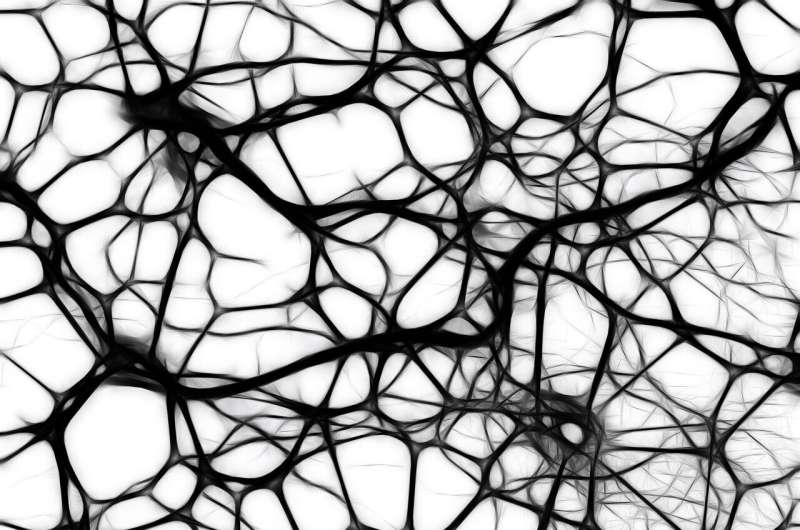Credit: Pixabay/CC0 Public Domain
Northwestern Medicine scientists have discovered two ways to preserve diseased upper motor neurons that would normally be destroyed in ALS, based on a study in mice. Upper motor neurons initiate movement, and they degenerate in ALS.
These neurons have a pathology—called TDP-43 pathology—in which aggregating proteins inside the cell become misfolded and toxic to the neuron. This happens in about 90% of all ALS patient brains and is one of the most common problems in neurodegeneration, detected also in the brains of frontotemporal dementia and Alzheimer's disease patients.
When there is TDP-43 pathology, this activates astrocytes and microglia—two types of cells that once were supportive, but now become deleterious, to attack and destroy the diseased neurons in the brain.
"When astrocytes and microglia eat diseased motor neurons, they are gone for good, and the window of opportunity to improve their health is lost," said lead investigator Hande Ozdinler, associate professor of neurology at Northwestern University Feinberg School of Medicine. "There is no turning back from neurodegeneration when the neurons are destroyed by astrocytes and microglia.
"That is a major problem in ALS and in other neurodegenerative diseases, and one of the reasons the disease progresses fast. Normally, that fast progression correlates with the activation of the astrocytes and microglia. We need to find ways to keep them calm."
In two new studies, Ozdinler and colleagues identify two independent ways to reduce the destruction of the upper motor neurons that are diseased with TDP-43 pathology in ALS by calming the angry astrocytes and microglia. They found that a gene therapy approach and a small molecule treatment are both are effective in mouse models of TDP-43 pathology. The genetic delivery of hepatocyte growth factor (HGF) soothes the astrocytes in the brain.
The findings will be published Feb. 23 in Nature Gene Therapy.
The Northwestern scientists also found that when the integrity of the mitochondria (the energy producer for the cell) is improved inside the diseased neurons, the astrocytes stop attacking them. Scientists fed the TDP-43 mouse models of ALS with the compound SBT-272, which binds and repairs the inner mitochondrial membrane. This prevents it from breaking down or becoming leaky, a phenomenon that is broadly observed in diseased neurons in ALS and other neurodegenerative diseases.
"We started giving the SBT-272 to mice, when they began to show symptoms of ALS, meaning when the mitochondria were already defective," Ozdinler said. "The compound helped repair the mitochondrial damage, reducing the impact of TDP-43 pathology. Most importantly, astrocytes and microglia stopped attacking. This is then reflected on neuronal heath."
This finding about how improving mitochondrial health was just published in Neurobiology of Disease.
The next steps in the research are to develop combination treatments to overcome complex diseases like ALS. "We believe a combination of treatments would work much better and would bring us much closer to a cure, as we need to do two things at the same time: (1) improve the health of diseased upper motor neurons; and (2) decrease the deleterious effects of the astrocytes and microglia that kill them," Ozdinler said.
Other Northwestern authors on the studies are Mukesh Gautam, Barıs Genç, Benjamin Helmold, Angela Ahrens, Öge Gözütok and Suchitra Swaminathan.
More information: Barış Genç et al, Novel rAAV vector mediated intrathecal HGF delivery has an impact on neuroimmune modulation in the ALS motor cortex with TDP-43 pathology, Gene Therapy (2023). DOI: 10.1038/s41434-023-00383-4
Journal information: Neurobiology of Disease
Provided by Northwestern University
























